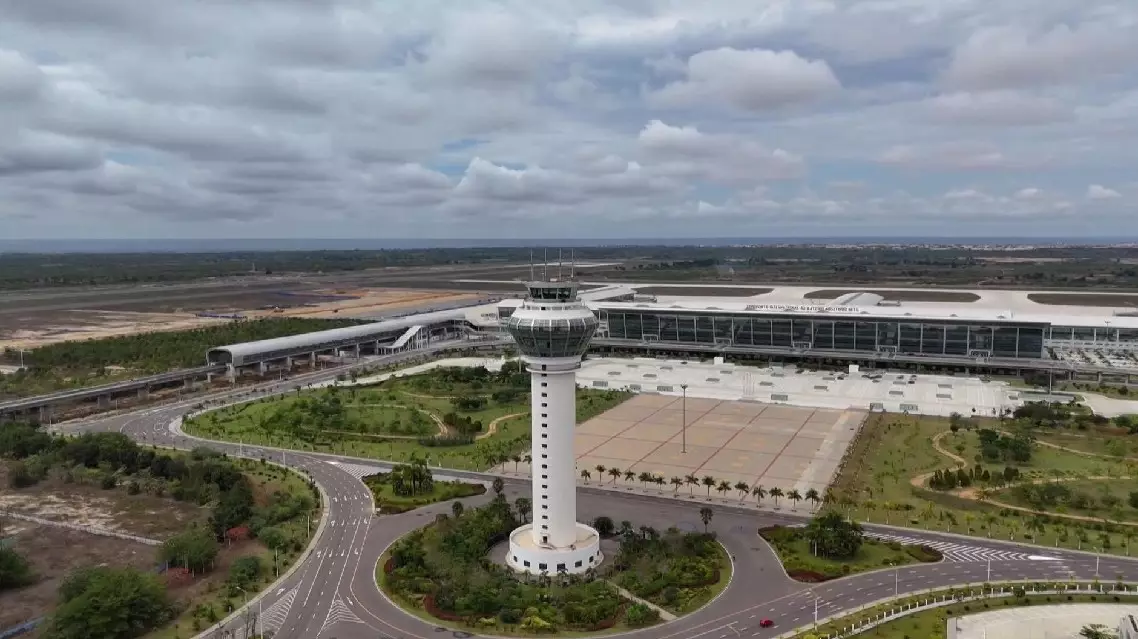Angola's new capital airport, Dr. Antonio Agostinho Neto International Airport (AIAAN), has opened for passenger flights and is capable of accommodating 15 million passengers annually.
According to the Angolan Ministry of Transport's flight schedules, the new airport, located 40 km southeast of downtown Luanda, the capital of Angola, and built by a Chinese company, saw eight round-trip flights between Luanda and Cabinda, operated by Angola Airlines (TAAG), on its first day of passenger services last Sunday.
After 20 years of planning and construction, Luanda has inaugurated its new international airport. Built with Chinese expertise and financing, this ultra-modern facility is set to reshape Angola's aviation landscape and its economic future. The national carrier, TAAG, is betting on the success of this project to expand its flight network and increase global connectivity through the new hub.
"It will have a great impact on Angola's position as a global hub, not only as a regional, but a global hub going through the African continent. We're talking about an airport with the capability to process 15 million passengers annually -- 10 million internationally and five million domestic -- plus 130,000 tons of cargo," said Miguel Carneiro, Chief Commercial Officer of the TAAG.
The airport will be key to attracting more business and tourism, with plans to expand flight routes, including direct links with China to drive trade and economic growth.
"The airline's strategic plan is currently designed in a view to expand with two regional routes and one intercontinental route. Definitely, we are putting together the business case for China, specifically for Guangzhou," Carneiro said.
Financed by China CITIC Bank, one of China's joint-stock commercial banks, and insured by the China Export and Credit Insurance Corporation, the construction of the airport is a step forward for Angola's infrastructure and broader development strategy.
"In 2023, November 10, the airport had started for cargo flight. And this year, November 10, we started for passenger flight," said Liu Hongguang, general manager of the AVIC International Engineering Company.
The new airport significantly elevates Angola's status within the region positioning the country as a key player in global aviation.
"The construction of this airport will provide a significant boost to our country in terms of economic growth. Our geographical position is one of the key factors to transforming this new airport into a hub because we are located in southern Africa, in a more advantageous position compared to our main competitor, South Africa. We have the infrastructure to receive aircraft from all over the world. With modern technology, such as an LS system for air navigation, we believe this will revolutionize our country's air travel history," said Engracia Paredes, an architect of the airport.
The newly inaugurated airport is set to become southwestern Africa's largest aviation hub. Currently serving regional flights to Cabinda, it will begin international routes next year.

Chinese-built new airport in Angolan capital to accommodate 15 million passengers annually










